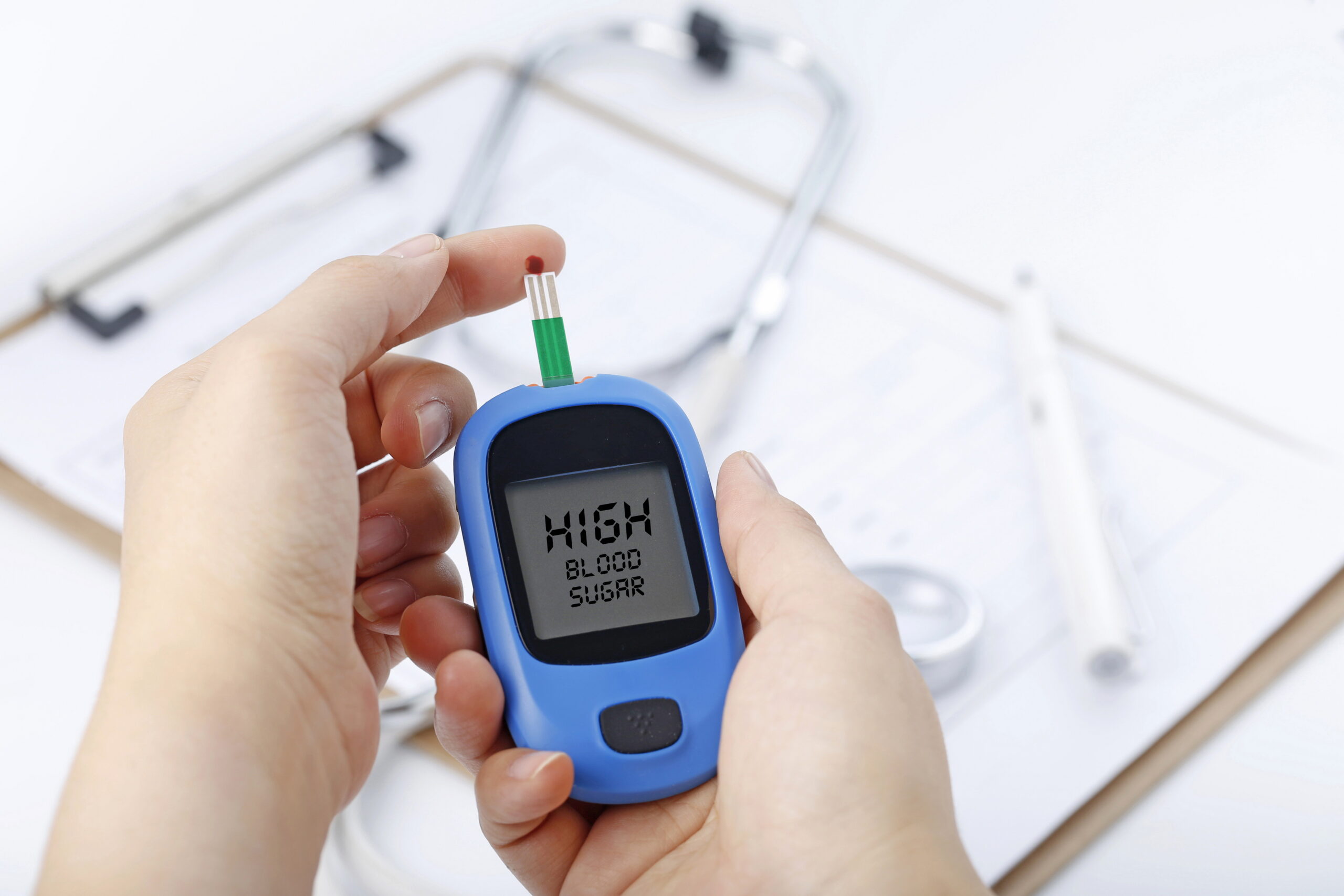Neuropathy is a condition that affects the peripheral nerves and has a neurological basis. Mechanical injuries and underlying conditions like diabetes or alcoholism can cause it. Check what are the symptoms of neuropathy and how to recognize the disease. Find out what are the ways to treat neuropathy.
The term neuropathy is broad in its meaning and can be better understood by examining its roots. It was created by combining two Greek words: neuro, meaning the nervous system, and pathos, translated directly as suffering and, in a broader sense, as a disease.
Neuropathies are a group of disorders that affect the peripheral nervous system. They cause a wide range of symptoms. Due to their diversity, neuropathies are a common form of neurological illness.
According to statistics, over 2% of the world's population may suffer from neuropathy. It is important to note that the incidence of these diseases increases with age – neuropathy is a condition that affects a significant number of patients over 55 years old, with nearly 10% of them experiencing difficulties.
Symptoms occurring in patients with neuropathy are of various natures – everything depends on what type of nerve fibers is involved in the pathological process. The symptoms of sensory neuropathy![]() are various sensory disorders – some sensory stimuli patients do not feel at all, while others may feel much stronger than before. Patients may complain about the following:
are various sensory disorders – some sensory stimuli patients do not feel at all, while others may feel much stronger than before. Patients may complain about the following:
Another type of neuropathy is motor neuropathy![]() . In that case, the pathology concerns the nerve fibers that control the activity of various muscle cells, and the symptoms of this type of neuropathy include:
. In that case, the pathology concerns the nerve fibers that control the activity of various muscle cells, and the symptoms of this type of neuropathy include:

Autonomic neuropathies![]() are another type of discussed disease. They occur when the autonomic (vegetative) nervous system fibers get damaged. In this case, the symptoms of neuropathy are different from those presented above and may be:
are another type of discussed disease. They occur when the autonomic (vegetative) nervous system fibers get damaged. In this case, the symptoms of neuropathy are different from those presented above and may be:
Neuropathies can either be present at birth or acquired later in life. Congenital neuropathy is less common and includes various diseases resulting from genetic mutations that can cause dysfunction in the peripheral nerves. Charcot-Marie-Tooth disease and Friedreich ataxia are two examples of such conditions.
Acquired neuropathy has multiple causes![]() , some of which include problems such as:
, some of which include problems such as:
After thorough analysis, it is evident that there are numerous causes of neuropathy. Surprisingly, in a significant portion of patients (up to 20%), the cause of the disorder cannot be identified, leading to a diagnosis of idiopathic neuropathy.

Neuropathy can be divided due to:
Although all the divisions mentioned above are significant, the division that categorizes the specific types of nerves impacted by the disease process appears to hold greater importance.
In this approach, three main types of neuropathy are distinguished: sensory, motor, and autonomic (there is also the possibility of mixed disorders, like sensory-motor neuropathy). This distinction is significant because patients with different types of neuropathy mentioned earlier experience various ailments.
Many types of neuropathy differ in their causes and symptoms. Diabetic neuropathy is a frequent type that affects people with diabetes. It typically manifests as pain, tingling, and numbness in the limbs. Another type is alcoholic neuropathy, which occurs in people who abuse alcohol and manifests itself, among others, in balance and sensory disturbances in the legs. Other types of neuropathy include radial, femoral, autonomic, and toxic neuropathy. Each type of neuropathy has its characteristic symptoms and requires an individual approach to diagnosis and treatment.
In some cases, diagnosis and treatment of neuropathy require prompt medical intervention.
Peripheral neuropathy![]() is a condition where peripheral nerves are damaged. Some peripheral neuropathy symptoms are pain, numbness, tingling, muscle weakness, and sensory disturbances.
is a condition where peripheral nerves are damaged. Some peripheral neuropathy symptoms are pain, numbness, tingling, muscle weakness, and sensory disturbances.
One of the most frequent problems that come with diabetes is diabetic neuropathy![]() . Nerve damage can occur due to high blood sugar levels, resulting in discomfort such as pain, numbness, tingling, and weakness in various parts of the body. It can also lead to autonomic disorders, such as digestive problems, urinary disorders, or even problems with the cardiovascular system.
. Nerve damage can occur due to high blood sugar levels, resulting in discomfort such as pain, numbness, tingling, and weakness in various parts of the body. It can also lead to autonomic disorders, such as digestive problems, urinary disorders, or even problems with the cardiovascular system.
Alcoholic neuropathy![]() is a condition where nerve damage is caused by prolonged alcohol abuse. Consistent alcohol consumption can result in metabolic disorders and vitamin deficiencies, which can negatively impact the nervous system's performance.
is a condition where nerve damage is caused by prolonged alcohol abuse. Consistent alcohol consumption can result in metabolic disorders and vitamin deficiencies, which can negatively impact the nervous system's performance.
Polyneuropathy![]() is a disease of the nervous system that is characterized by damage to many peripheral nerves. This disease can have various causes, such as diabetes, autoimmune diseases, exposure to toxins, or infectious diseases.
is a disease of the nervous system that is characterized by damage to many peripheral nerves. This disease can have various causes, such as diabetes, autoimmune diseases, exposure to toxins, or infectious diseases.
To determine the cause of neuropathy, it is necessary to conduct specific diagnostic tests![]() based on the type and location of the disease. The physical examination and medical history are the essential tools doctors use to detect neuropathy and its most likely source accurately. By considering the characteristic ailments, co-occurring health conditions, and medical history, doctors can determine the presence of neuropathy.
based on the type and location of the disease. The physical examination and medical history are the essential tools doctors use to detect neuropathy and its most likely source accurately. By considering the characteristic ailments, co-occurring health conditions, and medical history, doctors can determine the presence of neuropathy.
Laboratory tests play a crucial role when diagnosing neuropathy, and several tests are typically ordered for patients. It is necessary to determine the disease's cause in a neuropathy patient.
Many studies, such as complete blood count, electrolyte levels, hormonal tests, and urine tests, are significant here. Doctors may also request immunoglobulin tests or assess the concentration of different vitamins, such as B12, in a patient's body. For example, if a patient has diabetic polyneuropathy, the doctor may order tests to check for glycemic disorders. These include fasting blood glucose, OGTT (oral glucose tolerance test), and blood glycated hemoglobin (Hb1Ac) measurement. Determination of the Hb1Ac level makes it possible to assess blood glucose concentrations in the recent past, making this test an effective tool to verify the effectiveness of the implemented antidiabetic treatment.
Patients may be required to undergo tests for potential infections, such as HIV, to detect any infections. A patient with neuropathy may need to undergo a lumbar puncture to collect cerebrospinal fluid for lab analysis.
When diagnosing peripheral neuropathies, doctors may conduct additional imaging and functional tests. Some helpful imaging studies![]() include X-rays, ultrasounds, and MRIs. Ultrasound examination can provide a dynamic assessment of the nerve's position and condition, allowing doctors to observe changes in its position and compression during active limb movement.
include X-rays, ultrasounds, and MRIs. Ultrasound examination can provide a dynamic assessment of the nerve's position and condition, allowing doctors to observe changes in its position and compression during active limb movement.
A functional test whose abnormal results may indicate impaired nerve conduction is electroneurography. Using a unique device, this test measures the speed of an electrical impulse as it travels through a nerve. It's important to note that this test does not involve any invasive procedures, as the measurement is performed percutaneously. The doctor must have the appropriate experience and training to perform this test and interpret the results effectively.
Another functional test used in these diseases is EMG (electromyography), which measures the intensity of stimulation of a specific muscle by a given nerve.
The range of tests performed in patients with neuropathy is vast – the choice of specific tests depends on what cause of neuropathy the doctor suspects. In addition to the studies already mentioned, other analyses are also significant. To make a final diagnosis of neuropathy, specific nerve fibers are tested through electrophysiological tests. Although nerve biopsies are rarely performed, they may be ordered in cases like sarcoidosis suspicion.
The primary approach to treating neuropathy is by managing the underlying disease that caused it. Successful treatment![]() of peripheral neuropathy most often includes:
of peripheral neuropathy most often includes:
Neuropathy symptoms that result from peripheral nerve damage during surgery usually go away on their own as they heal. Pains caused by nerve damage caused by toxic substances and infections also disappear spontaneously when the agent stops working at the beginning of the healing process.
If neuropathy is caused by conditions like lupus, scleroderma, or rheumatoid arthritis, anti-inflammatory and immunosuppressive agents can help improve overall health by reducing immunity.
For patients with neuropathy caused by alcohol abuse, it is advised to completely abstain from alcohol and supplement any vitamin deficiencies as needed.
In diabetic neuropathy, symptoms resolve when blood glucose levels return to normal. However, if the disease of the nerves results from an abnormal blood supply to the lower limbs, the disappearance of the symptoms occurs after the restoration of proper blood circulation in these limbs. Proper care of the limbs and skin damage prevention is crucial in treating diabetic neuropathy.

Unconventional medicine![]() is also important in the treatment process, as it helps alleviate some unpleasant ailments associated with neuropathy. Most often used:
is also important in the treatment process, as it helps alleviate some unpleasant ailments associated with neuropathy. Most often used:
Sometimes, neuropathy can be caused by pressure, like in carpal tunnel syndrome. In such cases, surgery may help relieve the symptoms.
Electrostimulation of nerve fibers can enhance their function, but this method of treating neuropathy is not commonly utilized.